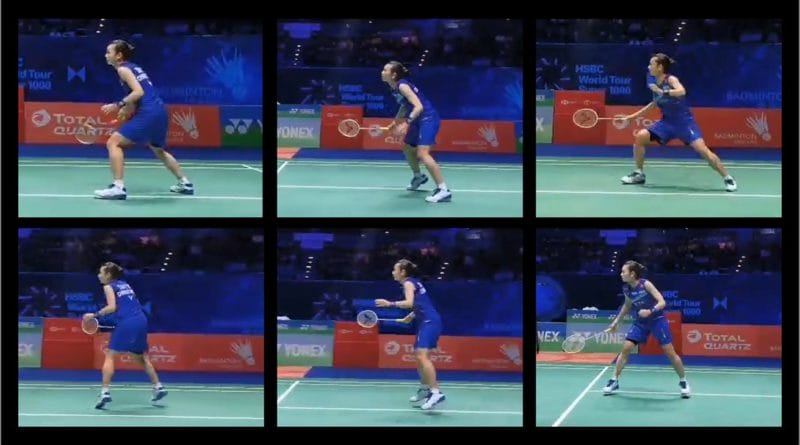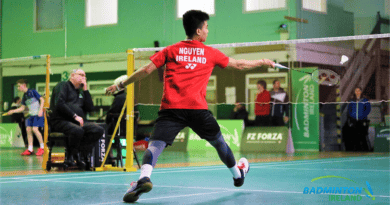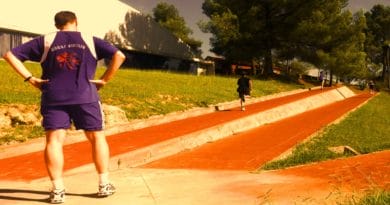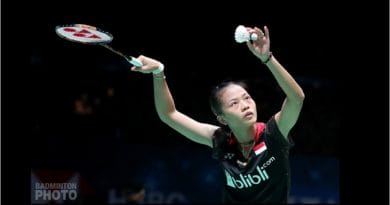6 Ways to use stances in your badminton movement
Do you use these 4 preparation badminton stances?
I promise that they will l help your badminton movement 🙂
They are easy to master and the improvements will be immediate, hopefully, you are already using them
It’s all about the tactical choices you make before your opponent strikes the shuttle
Watch this video and look at all the different stances Tai Tzu-Ying uses
This post is aimed at players
It will take about 6 mins to read and covers some fundamental points about badminton stances, especially in singles badminton movement. I recommend that you watch the video before reading any further and keep referring back to it.
Are all my points visible?
It would be great to hear your thoughts.
If you want to read the advice for coaches then click on this link or go to the end of the post for lots more information, including a quick Badminton Stances quiz
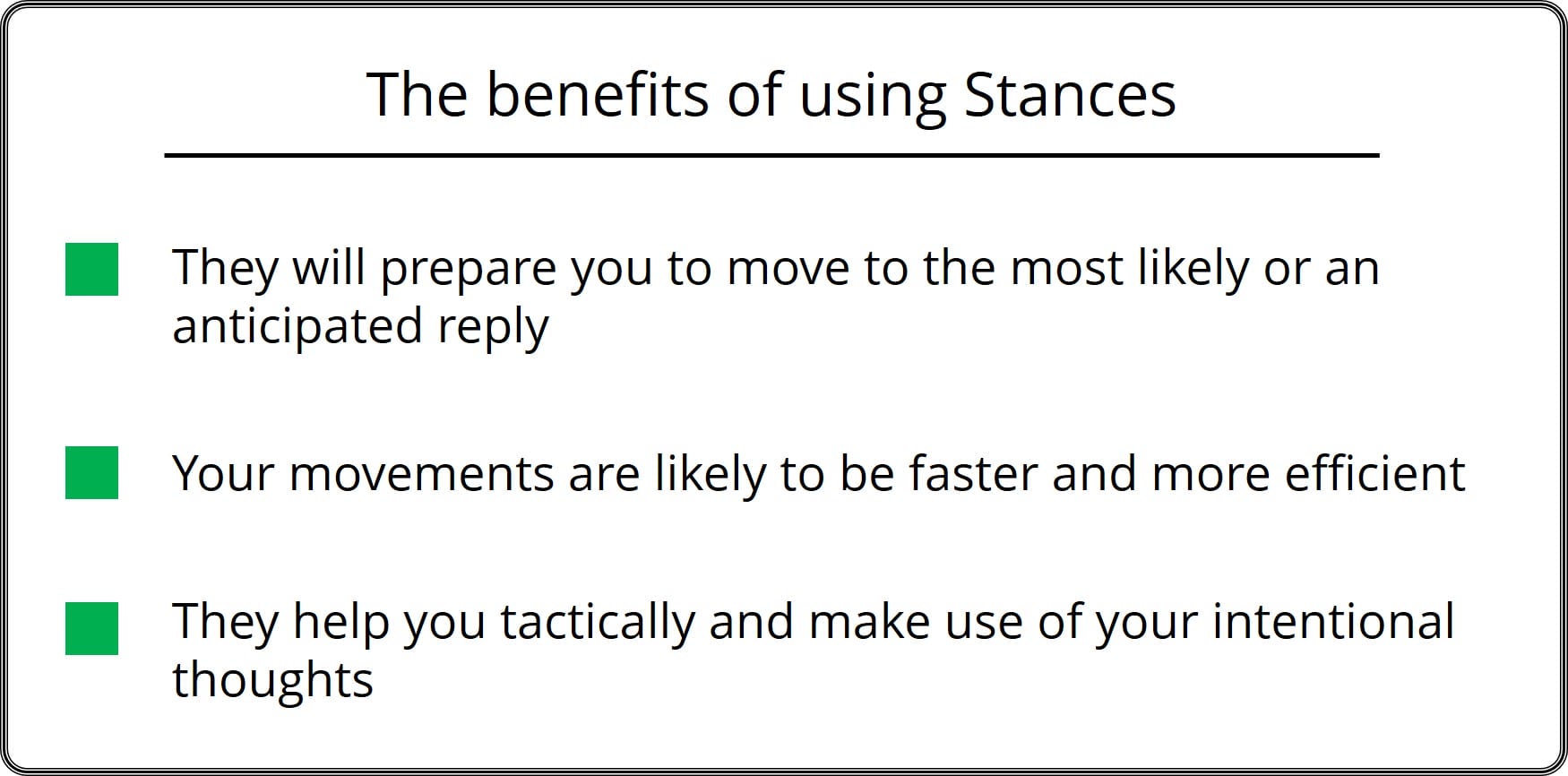
– – – – – – – – – – – – – – – – – –
1 What do these Badminton stances look like?
2 Why use them?
3 Names and descriptions
4 When they are used?
5 Its all about your tactical thoughts
6 How to develop them in practice
Badminton Stances are sometimes difficult to see but when you realise that they exist you see them everywhere 🙂
Warning
There are lots of ‘it depends’ and ‘hopefully’ used in this post, and for good reason. Stances are taken up before the opponent strikes the shuttle so that you can seek an advantage (that’s the ‘hopefully’ part). However, they may not play the stroke that you prepared for (that’s the ‘depends’) and therefore you may be required to change again to get to the shuttle.
It may look as if you have prepared for or anticipated the ‘wrong’ shot, but at least you anticipated and it’s better than doing nothing at all.
– – – – – – – – – – – – – – – –
1) What do the stances look like?
These are the positions that you deliberately take up before the opponent strikes the shuttle. Something you do immediately after you hit the shuttle while you ‘wait’ to see what the opponent will play.
There are 4 stances (positions of how to stand) and often it’s easier to see them in a singles match. One happens at the start of every rally (The Receive of Serve Stance) and the other three happen during a rally, often many times

There are some occasions when you may not take up any stance and just move directly from one shot to another
More about this later
– – – – – – – – – – – – – – – –
2) Why use them?
After every stroke you play, you have 2 choices. In both situations, you must make a choice.
1. Wait (pause) for a moment before your opponent plays their stroke
2. Move quickly to the shuttle as you have no time to wait
The choice you make must be with the intention of helping your next movement
In both situations, you must make a choice
In scenario 2, you could say that the choice is easy as it’s made for you by the situation and the opponent’s stroke. If you don’t move quickly to where the shuttle is going in, will hit the court and they will win the point
In scenario 1, you have time (but not much time) to chose how you want to stand after you play your stroke and before your opponent strikes theirs. There is certainly not one stance that will cover all the replies if you want to seek an advantage.
It’s your choice to seek a tactical advantage that will help your next movement, hopefully
– – – – – – – – – – – – – – – –
3) Names and descriptions
There are 4 Stances
Forward attacking – Racket foot forward, body in a sideways stance, racket height and position is variable.
Backward attacking – Non-racket leg forward, body in a sideways stance, similar to the receive of serve stance, racket height and position is variable.
Defensive – Body facing square to the net, legs wider than shoulders, racket height is lower.
Receive of service – Non-racket leg forwards in a sideways stance. Racket height is generally around shoulder to head height.
Forward attacking
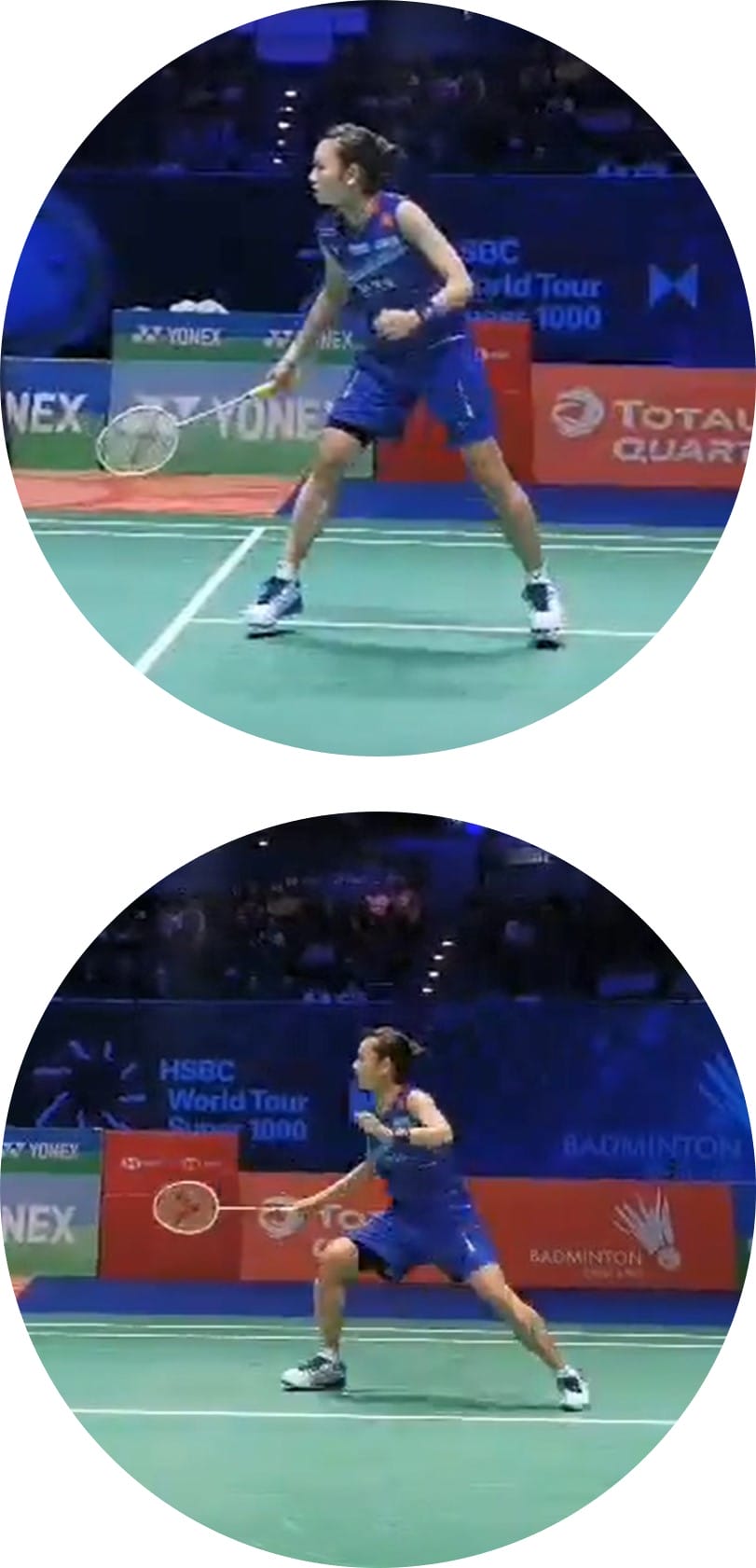 When to Use it – The shuttle at or below tape level, your opponent is unable to hit downwards
When to Use it – The shuttle at or below tape level, your opponent is unable to hit downwards
If you have watched the video, hopefully, you will agree that this stance is easy to see and is used often in rallies.
Look for situations when a defensive block or net shot has been played. It can also be used when you have put the shuttle deep into your opponents’ rear court, behind them and you think that they are unable to hurt you.
It provides a position for quick forward movement, and allows for tactical anticipations, reducing your opponent’s weapons.
Sometimes you will take up this stance in recovery from a net shot and then it could be argued that it’s just part of the recovery and I’d agree with that (unless you’ve been incorrectly encouraged to play nets and return into a square stance behind the service line)
This is a deliberate movement, so I would initially advise you to look for what happens after a defensive block on both the forehand and backhand sides.
- Stance is with the racket leg forward, pointing towards where the shuttle will be struck by the opponent
- Legs wide apart, with knees flexed
- Racket position “on alert”, hand cocked
- Movement into the stance is often directly after playing a previous stroke
- You could think of it as recovery from one shot or early preparation for the next as it’s often a seamless transition
Backward attacking
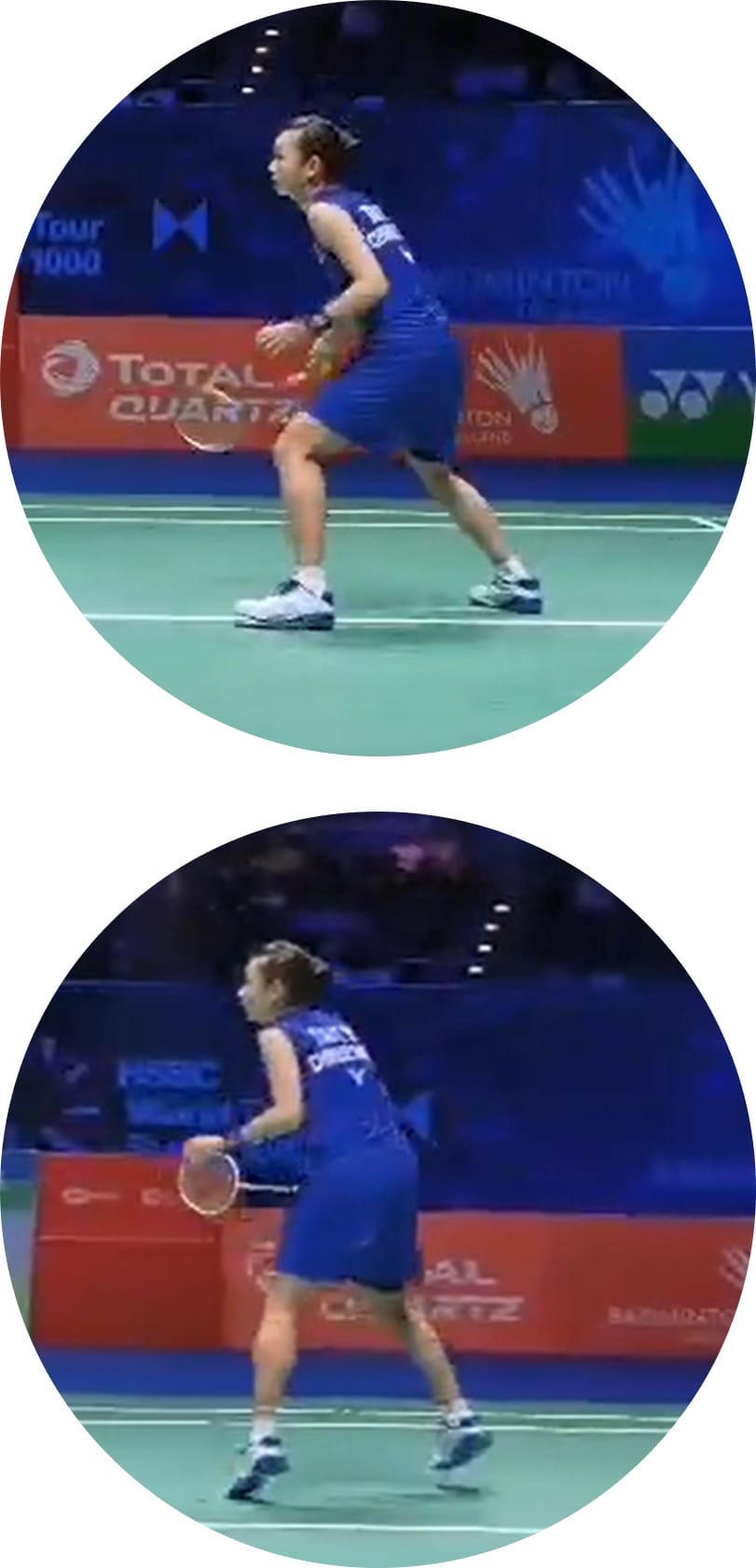 When to Use it – The shuttle at or below tape level, your opponent is unable to hit downwards and you are anticipating a stroke into your rear court.
When to Use it – The shuttle at or below tape level, your opponent is unable to hit downwards and you are anticipating a stroke into your rear court.
If you are a fast, strong player and looking for a lift and the chance to attack, think about using this stance.
It is most often used as a stance in your backhand frontcourt as an alternative to a forward-attaching stance. Again, this is often after you have played a defensive block or net shot. As before, the shuttle could be deep, behind them and you think that they are unable to hurt you and you anticipate a stroke into your rear court.
It will provide you with the position for quick backwards movement. As this stance is not as commonly used as the forward attacking stance it may cause your opponent to reconsider their shot if they intended to play a lift.
The backward attacking stance is very similar in appearance to the receive of serve, although it happens within the rally. Not all players will feel comfortable in using this stance as it exposes possible weaknesses. However, for some players, it’s a great way of exploiting their strengths and causing the opponent tactical difficulties.
It’s this anticipation of an opponent’s lift that often causes players to take up this stance. Most often seen in the backhand side of the court, the stance will allow faster movements into your round the head court. Be aware that your crosscourt net area is now ‘exposed’.
- Stance is with the non-racket leg forward, pointing towards where the shuttle will be struck by the opponent
- Legs wide apart, with knees flexed
- Racket position ‘on alert’, hand cocked
- Movement into the stance is often directly after playing a previous stroke
- You could think of it as recovery from one shot or Early Preparation for the next as its often a seamless transition
- This stance looks like the Receive of Service and has many, many similarities
Defensive Square
 When to Use it – The shuttle is above the tape and your opponent is easily able to hit downwards
When to Use it – The shuttle is above the tape and your opponent is easily able to hit downwards
It’s probably the easiest of all the stances to see as it certainly appears after a high service and after lifts or clears to your opponent’s rear court.
Whenever you think that your opponent is likely to hit down hard you’ll adopt this square defensive stance. This position enables quick easy sideways movement to cover their fast smash.
All players should be comfortable in adopting this stance. It will aid defensive situations to ‘cover’ the shuttle that will hit their court first i.e. the one with the least amount of time to move to.
The exact position may vary depending on how wide the opponent is in the rear court and you may have one leg slightly in front of the other. These are subtle (but essential) variations.
- Square is a square-on position, shuttle above the net and could be struck downwards by an opponent
- Racket position ‘on alert’ in front of the body, hand cocked around knee height
- The racket height will vary in different tactical situations, but generally, it is low and not up around the chest height
- Wide legs, wider than shoulder-width with knees flexed
Receive of Serve Stance
 When to Use it – As the name suggests, it is a stance that is taken up at the start of a rally, just before your opponent serves.
When to Use it – As the name suggests, it is a stance that is taken up at the start of a rally, just before your opponent serves.
It is very similar to the backward attacking stance described above. However in this case you will have much more time to wait and prepare before moving.
I will describe the stance and it’s technical components in future posts. I think the most important aspects of this stance are the thoughts players have in between the rally just before they stand to receive.
If you want to read advice and recommendations about how to use the gap in between rallies, go and read 6 Ways to use the Rally Break
– – – – – – – – – – – – – – – –
4) When they are used?
There are certain ‘considerations’ that apply to the use of these stances. However, these are considerations, not rules.
Your aim should be that many of these badminton movement in and out of stances are ‘automatic’ and ‘without thought’, but not always. More about this later.
The vast percentage of rallies are full of many occasions when an Early Preparation stance will be required as the opponent may have several options. Players will have to select the appropriate stance. Hopefully, these guidelines will help.
Everything depends on
- The height of the shuttle on the opponent’s side of the net
- Which shot they play will hit your court first
- What your opponent(s) can do and their intentions
- Your intentions (you must have some)
Sometimes no stance is required
As with nearly all aspects of playing there are very few certainties, absolutes. This is the same with stances.
Not every stroke/movement will end in a preparation stance before moving again. But, there are some rally situations where the variable options to the opponent are limited, and almost no alternative could be played.
Can you think of a rally situation when your opponent will be constrained in their choice of replies, having almost none or very few?
How about these scenarios – would you adopt a ready stance or move quickly?
Remember to consider
- The height of the shuttle on the opponents’ side of the net and which shot they play will hit your court first
- your intentions (you must have some)
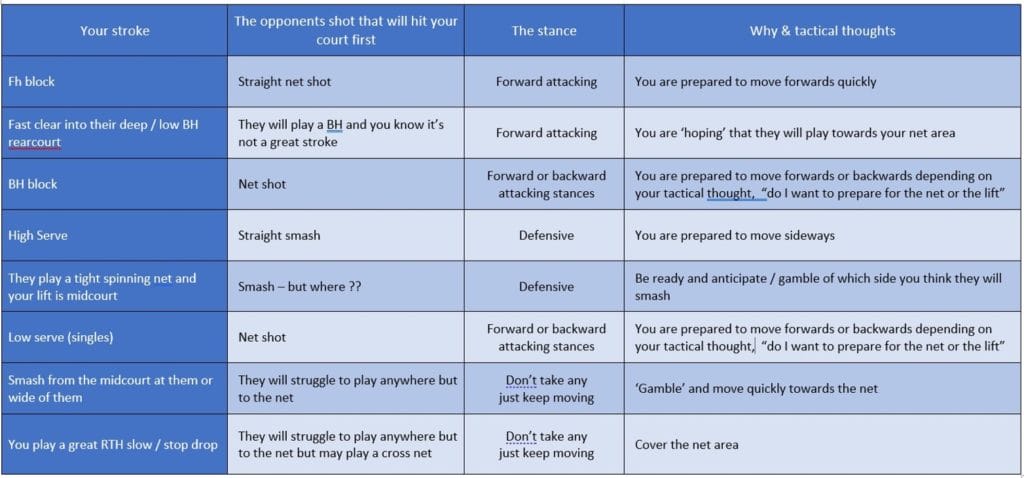
– – – – – – – – – – – – – – – –
5) It’s all about your tactical thoughts
All these badminton stances offer you an opportunity in the rally when you can move/prepare before your opponent strikes the shuttle. So why not take up this opportunity?
Take up a stance with the intent of affecting what happens next.
This is your tactical choice and could be described as anticipatory, plus the more you use them and experiment, the better you will become.
I’d like to consider that most of the choices should seem obvious to you. I hope that is what you’ve been thinking.
If you agree and believe that you have been making intentional movements (by adopting one of several stances) within the rally then consider what questions you’ve been asking yourself.
Hopefully, some tactical thoughts have been ‘automatic’ and only now you’ve realised why you’ve made them.
Be aware: there will be some situations when you don’t take up a stance and just move quickly to where the shuttle will be going. This can happen when you are attacking or defending.
Can you think of these situations?
When I was initially introduced to stances my coach used the phrase “prepare to cover the opponent’s shot that will hit your court first”.
This statement will not explain all the stances promoted here but will act as a simple introduction to the more complex tactical and anticipatory thoughts later.
Click on this image to read more information.
It’s certainly NOT all about always standing square
And certainly NOT all about returning to a central base position
– – – – – – – – – – – – – – – –
6) How to develop Badminton Stances in practice
The good news is that you don’t need your coach to feed you in order to develop your stances and ultimately your badminton movement.
The bad news is that in order to practice them you must be playing rallies or at least mini rallies.
Single shot multi-shuttle practice is not the best way to practice your stances
Ideas for you to try
- Always consider which shot your opponent could play that will hit your court first and prepare for that.
- Use the rule ‘if the shuttle is above/below the tape…. then’
- Use these ideas in your shadow practice (read more about 6 Ways to improve your shadow badminton)
- Remember it’s not just about standing square

- Why not start some of your practices in a forwards attacking stance: now that could be different
- Why not start the practices with you holding the shuttle and ‘feeding’ your partner
- Play every rally as if it was like a real match and hit at least 2 strokes
- Watch as many videos (especially those filmed from the side) as you can. Examine the footwork and look for, even count, the different stances they use.
- Sometimes there is no need for a stance, just move.
- Ask your coach to set up practices that allow you to use different stances when you decide.
Once you know about stances, they are easy to master and the improvements will be immediate

